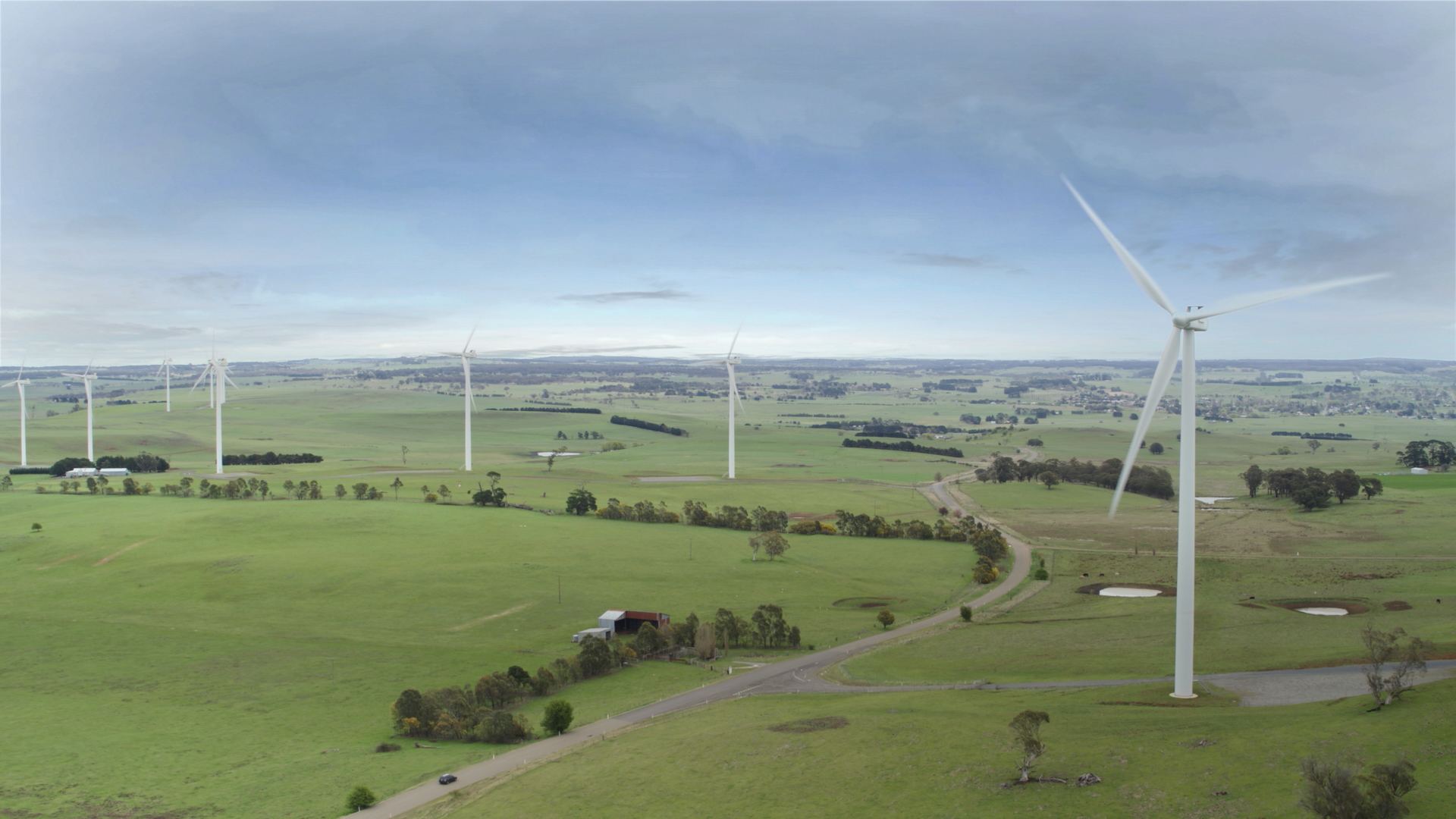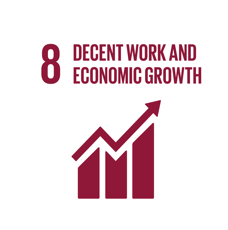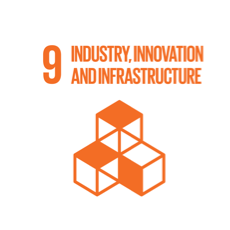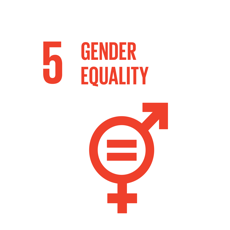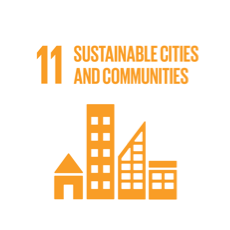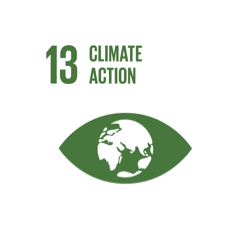Our stakeholders
Downer recognises that our business operations have a direct impact on a wide range of stakeholders.
Downer believes that what is important to our stakeholders is important for us to meet our strategic objectives and fulfil our Purpose.
This requires ongoing and effective engagement with our stakeholders, where we provide transparent and timely information and actively encourage feedback. We utilise the following initiatives to promote open, two-way communication between Downer and our stakeholders.
How we engage with our stakeholders
Downstream*
 Downstream
Downstream Downstream
Downstream Downstream and
Downstream and Upstream
Upstream Upstream
Upstream Upstream
Upstream Upstream
Upstream Upstream
Upstream Upstream
Upstream Downstream
Downstream Upstream
UpstreamDownstream stakeholders – comprises the paying customer and end-users of Downer’s products and services.
What are material issues?
Downer seeks to identify the issues that matter most to the business and our stakeholders, and have the greatest potential to impact our future success and returns to shareholders. We refer to these as our material issues. In FY19, Downer revisited its materiality assessment in accordance with the Global Reporting Initiative (GRI) Standards. Materiality Counts, an independent expert, led a process to engage selected internal and external stakeholders to identify and understand our material economic, social, environmental and governance risks and opportunities.
Why we do this
Materiality helps Downer to focus our sustainability reporting on the material issues, helping to keep it directly relevant to what matters to our stakeholders. Material issues are also a valuable input to our strategic planning. Downer recognises these issues may change over time, reflecting changes in our business and external operating environment and the expectations of stakeholders. We use the results of the materiality assessment to inform our business strategy and our sustainability framework and targets.
Our materiality process
The independent process consisted of the following steps.
Step 1
Develop the universe of potential material issues:
A list of potential material issues, alongside short explanations, was compiled using a comprehensive range of inputs from various stakeholders, as mentioned above. These included material risks, media scanning, stakeholder feedback, employee surveys, peer review, industry trends and the United Nations’ Sustainable Development Goals (SDGs). This resulted in a consolidated list of 18 potential material issues for review and discussion by stakeholders.
Step 2
Materiality survey:
A representative sample of stakeholders was identified for consultation on the relative importance of these issues. This included internal stakeholders – namely Board members, Executives and employees – as well as external stakeholders including investors, business customers, suppliers, industry associations and Non-Governmental Organisations (NGOs), ensuring geographic spread across Australia and New Zealand. All stakeholders completed a survey, providing quantitative data on the relative priority of the issues.
Step 3
Stakeholder interviews:
One-on-one telephone interviews were undertaken with selected external stakeholders which provided qualitative context to inform our understanding of the current and future context of each issue, including the potential for it to impact our value creation over time.
Step 4
Validation of the results:
The validation of results is an important part of the process. The qualitative and quantitative results and stakeholder feedback were presented to Downer’s Zero Harm Board Committee for validation and approval. Once approved, these material topics and issues framed the structure and content of the Sustainability Report.
Materiality results
Stakeholders prioritised the issues based on their importance and significance of impact for Downer. An overall issue ranking greater than 8.20 (sum of the average internal and the average external rankings) was taken as the materiality threshold for Downer. This provided a list of the top 11 issues which Downer deems to be its material issues. The remaining seven issues, which remain important to Downer and will continue to be managed, are referred to as other issues.
In FY20, the material issues were examined to ensure their continued relevance and importance, and to consider the impacts of COVID-19 to determine whether this has affected their prioritisation. The outcome of this exercise was that, despite the disruption caused by COVID-19, the material issues and their prioritisation remained unchanged.
The materiality assessment provided key sustainability insights for Downer’s strategy and frames the content for this year’s Sustainability Report. The materiality results are shown in the matrix below and further explained in order of priority.
The results were positive, with strong alignment between internal and external stakeholder views, as shown in the spider diagram.
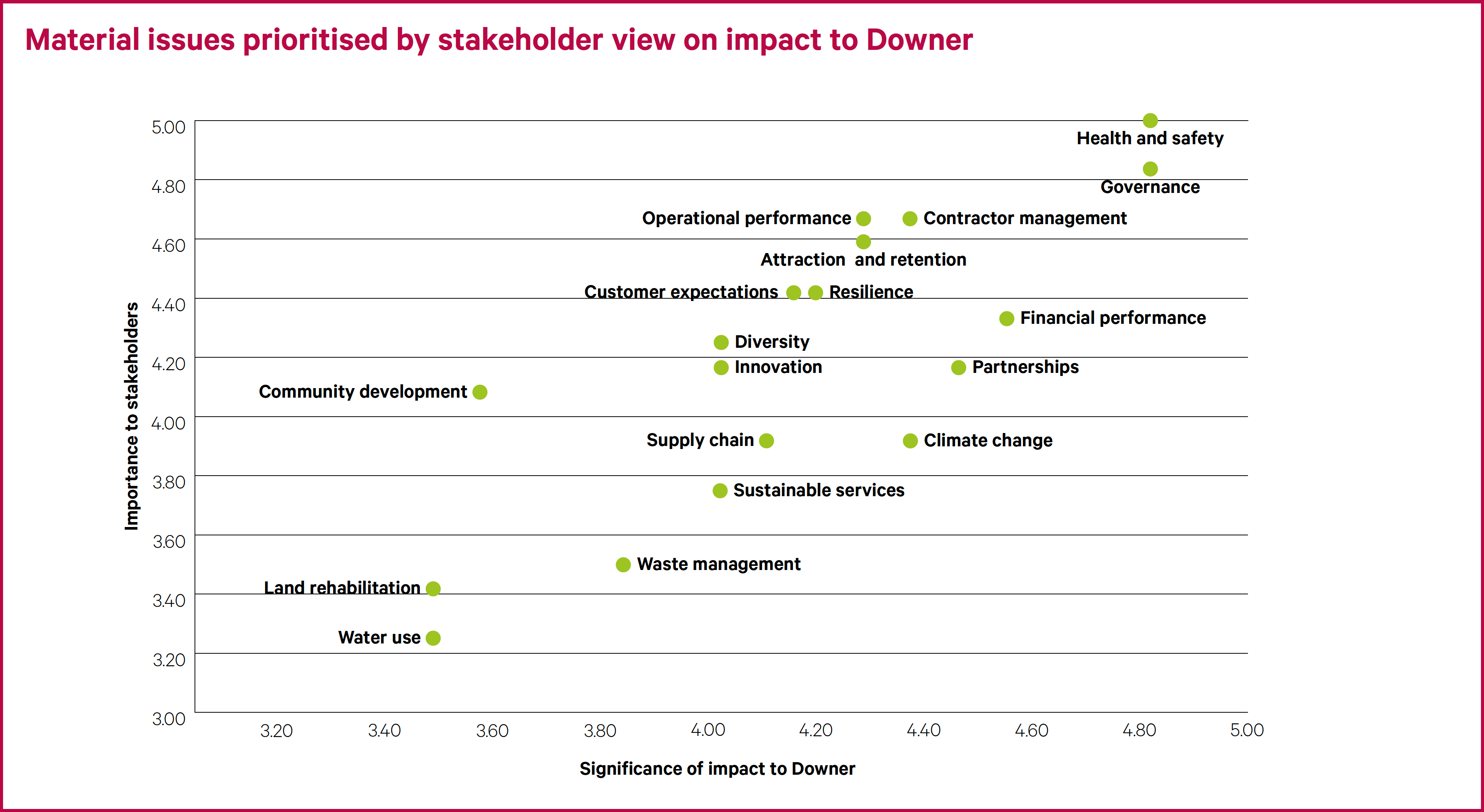
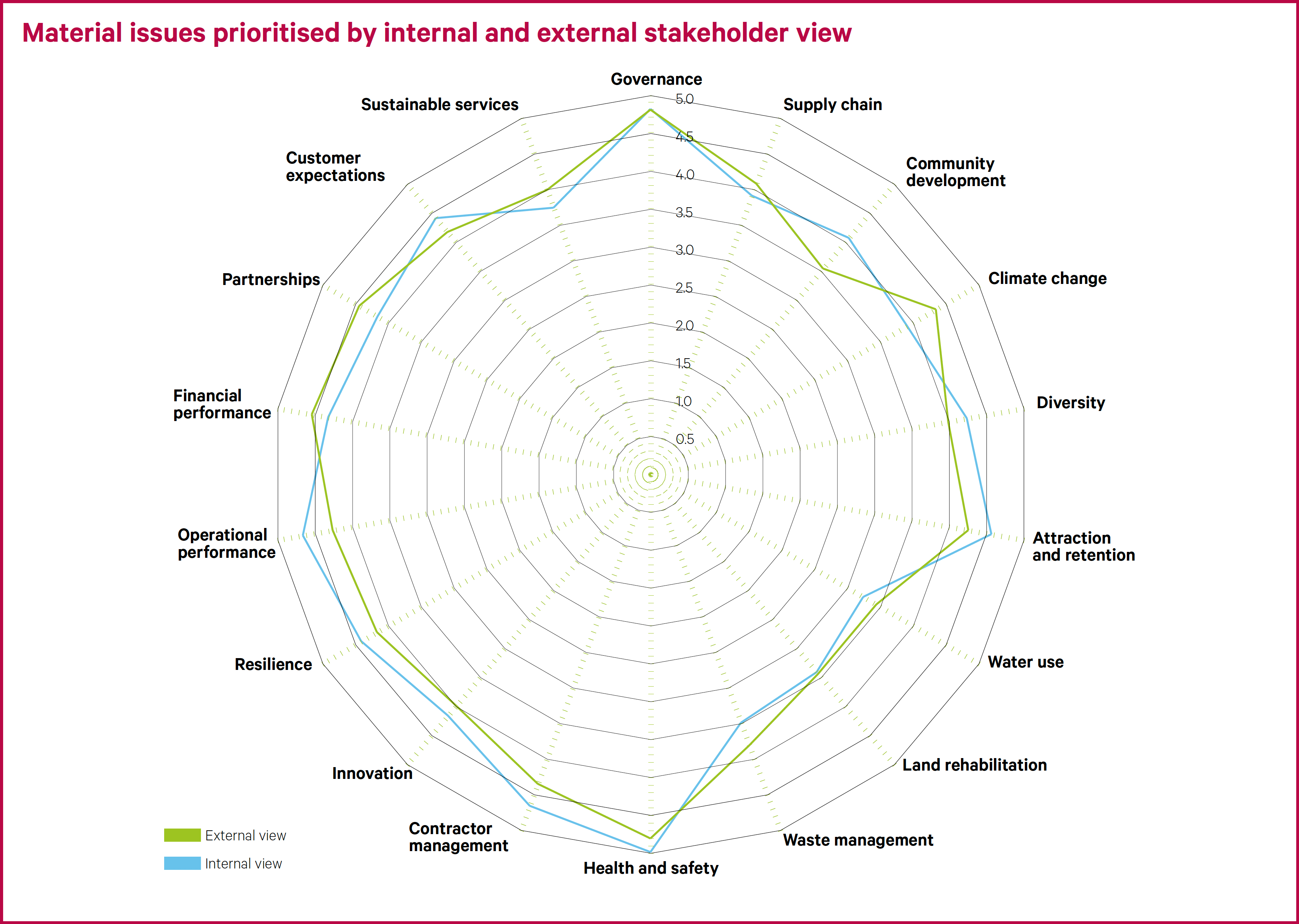
Material issues
This materiality assessment identified a prioritised list of 11 material issues. It also identified the top seven Sustainable Development Goals that Downer contributes to. The context behind each material issue is as follows:
The material issues identified above are addressed within the relevant sections of this Sustainability Report, except for financial performance, operational performance and business resilience. Instead, these are referenced within the context of the Sustainability Report but addressed in more detail in Downer’s Annual Report.
The other issues, in order of priority are:
Changes from previous years
There are no material changes in the list of material topics and topic boundaries from previous years. However, restatements were made to FY18 and FY19 Scope 1 emissions and energy consumption within the Environment section. This is in response to the inclusion of subcontractor emissions for New Zealand for FY18 and a material adjustment to previously disclosed subcontractor emissions for FY19, as a result of a change in methodology.
UN Sustainable
Development Goals
In 2015, the United Nations agreed on 17 SDGs as part of a 2030 Agenda for Sustainable Development to end poverty, promote prosperity and wellbeing for all, and protect the planet.
